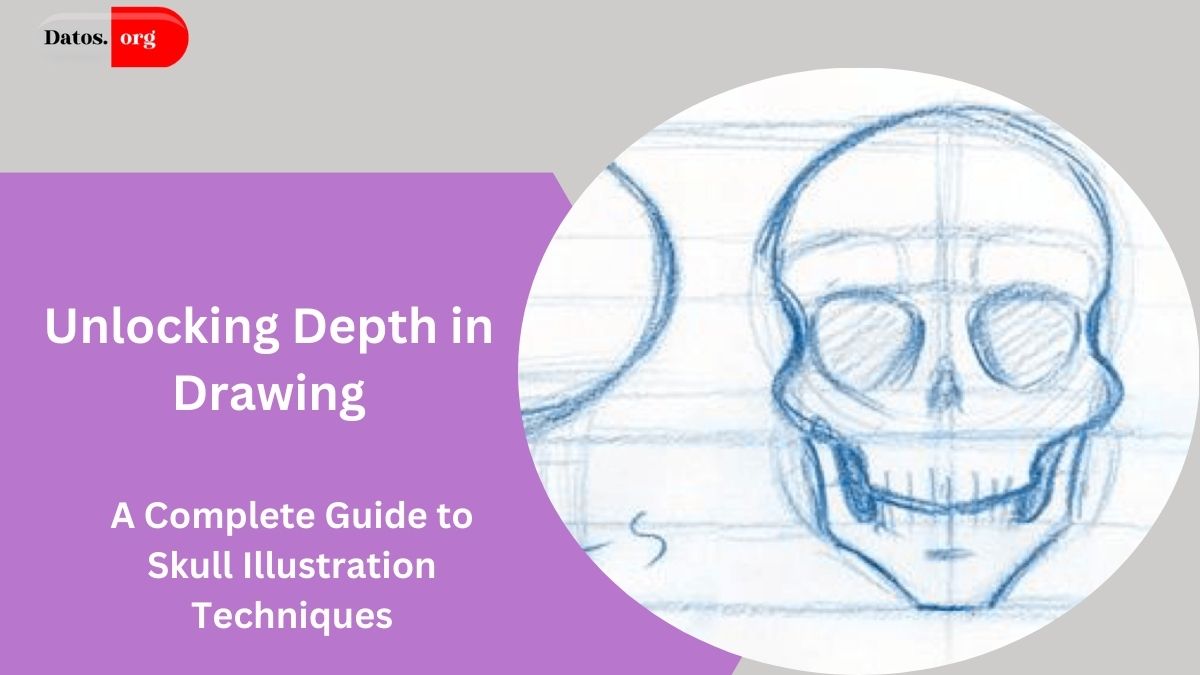Drawing can be both a rewarding and challenging endeavour, especially when it comes to creating realistic representations.
One of the critical aspects that can elevate your artwork is understanding depth.
Whether you’re a novice or an experienced artist, mastering depth can significantly enhance the dimensionality of your drawings.
This guide will help you navigate the complexities of drawing, particularly focusing on skulls while providing tips and techniques to improve your skills.

- Grasping the Concept of Depth
- Methods for Achieving Depth in Illustrations
- Mastering Dimension Through Shading and Textures
- Suggestions for Drawing Skulls with Depth and Dimension
- Common Errors to Avoid When Illustrating Skulls
- Conclusion
- People May Ask
- What materials do I need to start drawing skulls?
- How can I improve my shading skills?
- Is it necessary to use reference images?
- How can I avoid making my drawings look flat?
Grasping the Concept of Depth
Depth in drawing refers to the perception of three-dimensional space on a two-dimensional surface.
It allows viewers to perceive objects as having volume and distance rather than appearing flat.
Understanding how to create depth involves grasping concepts like perspective, overlapping elements, and scale.
MUST READ: Unlock Your Artistic Skills: A Complete Guide to Drawing Cats
By learning to manipulate these elements, you can transform your drawings from simple outlines to lifelike representations.
Methods for Achieving Depth in Illustrations
Several techniques can help you achieve a sense of depth in your artwork:
- Overlapping: Place one object in front of another to suggest distance. For example, when drawing a skull, overlapping features can create the illusion of depth.
- Size Variation: Objects that are closer to the viewer should be larger, while those farther away appear smaller. This size difference helps to create a sense of space.
- Linear Perspective: Use converging lines to guide the viewer’s eye into the distance. This technique is essential for establishing a background in your drawings.
- Atmospheric Perspective: Use lighter and less saturated colours for distant objects, simulating how the atmosphere affects visibility.
Mastering Dimension Through Shading and Textures
Shading is one of the most effective ways to convey depth and dimension in your drawings. Here are some key points to consider:
- Light Source: Identify where your light is coming from. This will dictate where highlights and shadows fall on the skull.
- Value Gradation: Utilize a range of values from light to dark to create form. Smooth transitions in shading can suggest curvature and volume.
- Texture Techniques: Experiment with various textures to give your drawing character. For skulls, consider how to represent bone textures, cracks, and other details that add realism.
Suggestions for Drawing Skulls with Depth and Dimension
Drawing skulls can be exceptionally intricate due to their complex shapes. Here are some practical tips:
- Study Anatomy: Familiarize yourself with the anatomy of the skull. Understanding its structure will help you draw it more accurately.
- Use Reference Images: Look at photographs or real-life skills to grasp the nuances in shape and shadow.
- Start with Basic Shapes: Break down the skull into simpler geometric forms like spheres and cylinders to establish the overall structure before adding details.
- Practice Regularly: The more you practice, the more comfortable you will become with shading and creating depth. Set aside time to draw skulls from different angles.
Common Errors to Avoid When Illustrating Skulls
As you work on your skull drawings, be mindful of common pitfalls:
- Ignoring Proportions: Ensure that the skull is proportionate. Use guidelines to maintain correct sizes and shapes.
- Overcomplicating Shadows: While shading is essential, avoid making shadows too harsh unless the light source justifies them.
- Neglecting Background Elements: A well-drawn skull can seem out of place without a complementary background. Consider incorporating elements that add context.
Conclusion
Mastering the art of drawing with depth and dimension takes practice and patience.
By understanding the principles of depth and applying techniques such as shading and texturing, you can significantly improve your artistic skills.
Whether you’re drawing skulls or any other subjects, the ability to create a three-dimensional appearance will elevate your artwork to new heights.
People May Ask
What materials do I need to start drawing skulls?
You’ll need good quality paper, pencils (preferably a range from H to B), an eraser, and a blending tool for shading.
How can I improve my shading skills?
Practice different shading techniques like hatching, cross-hatching, and blending. Regular practice will enhance your control over value transitions.
Is it necessary to use reference images?
While not mandatory, reference images can greatly improve your understanding of shapes, shadows, and proportions, leading to more accurate drawings.
How can I avoid making my drawings look flat?
Focus on using shading effectively, incorporate depth techniques, and regularly assess your work for proportion and perspective.
Click here to learn more.